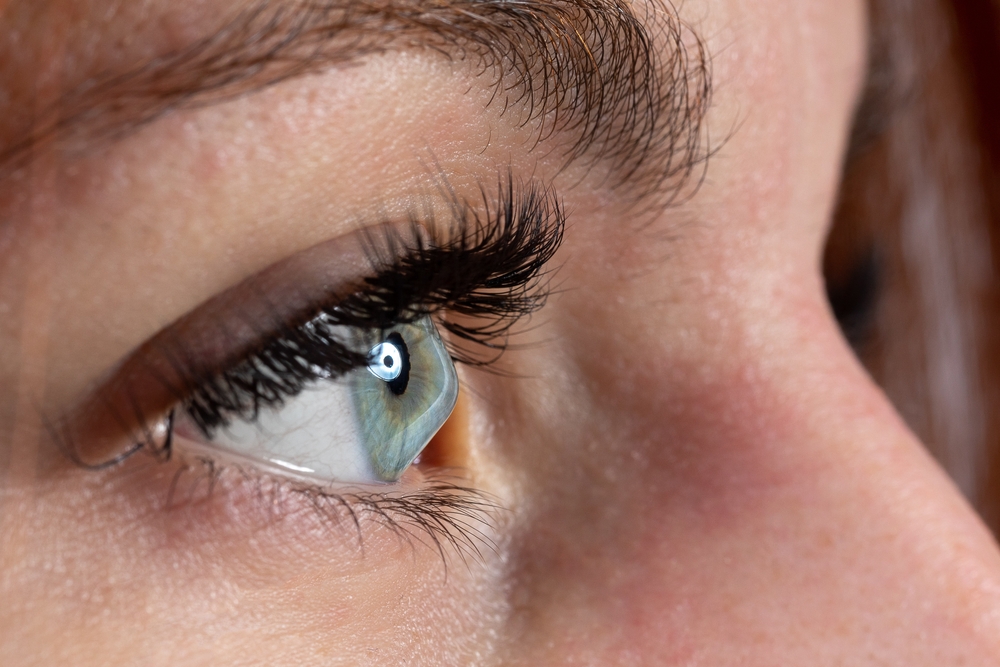
Keratoconus is a progressive eye condition that causes the cornea, the clear front part of the eye, to thin and bulge into a cone-like shape. This distortion can lead to significant vision problems, including blurred and distorted vision, sensitivity to light and glare, and frequent changes in eyeglass or contact lens prescriptions.
What is Keratoconus?
Keratoconus is an eye condition that typically begins in the late teens or early 20s and progresses gradually over time. The exact cause of keratoconus is not fully understood, but it is believed to be a combination of genetic and environmental factors.
In a healthy eye, the cornea is a smooth, symmetrical surface that helps focus light onto the retina, allowing for clear vision. However, in individuals with keratoconus, the cornea gradually thins and bulges, becoming irregular in shape.
How is Keratoconus Diagnosed?
Diagnosing keratoconus accurately is crucial for developing an effective treatment plan. Your optometrist will likely perform a series of tests to assess the condition of your cornea and determine the best course of action. Some of the common diagnostic tests for keratoconus include:
• Corneal topography: This imaging test maps the surface of the cornea, providing detailed information about its shape and identifying any irregularities.
• Slit-lamp examination: Your eye care provider will use a specialized microscope to examine the structure of your cornea and look for signs of keratoconus.
• Pachymetry: This test measures the thickness of the cornea, which is essential for monitoring the progression of keratoconus and determining the appropriate treatment options.
• Keratometry: This test measures the curvature of the cornea, helping to identify any distortions or irregularities.
Based on the results of these diagnostic tests, your optometrist will develop a personalized treatment plan that addresses your specific needs and the stage of your keratoconus.
Treatment Options for Keratoconus
Treatment options for keratoconus vary based on the severity of the condition and the progression of the disease. Below are the primary treatment options:
• Eyeglasses and Soft Contact Lenses: In the early stages of keratoconus, vision can often be corrected with eyeglasses or soft contact lenses. These options help manage mild symptoms but may not be effective as the condition progresses.
• Rigid Gas Permeable (RGP) Contact Lenses: As keratoconus progresses, RGP contact lenses are often prescribed. These lenses provide better vision correction by creating a smooth, regular surface over the cornea, compensating for the irregular shape.
• Scleral and Hybrid Contact Lenses: For more advanced keratoconus, scleral lenses (which rest on the white part of the eye) or hybrid lenses (which have a rigid center and soft outer skirt) can offer improved comfort and vision correction.
• Corneal Cross-Linking (CXL): Corneal cross-linking is a minimally invasive procedure designed to halt the progression of keratoconus. It strengthens the collagen fibers in the cornea, preventing further thinning and bulging. CXL is most effective when performed in the early stages of the disease.
• Intacs (Intracorneal Ring Segments): Intacs are small, semi-circular rings implanted in the cornea to flatten the corneal curve and improve vision. This option is often used for patients who cannot tolerate contact lenses or have moderate keratoconus.
• Topography-Guided Custom Ablation Treatment (T-CAT): This laser treatment reshapes the cornea's surface, improving its smoothness and visual acuity. T-CAT is typically combined with corneal cross-linking to stabilize the cornea after reshaping.
• Corneal Transplant (Keratoplasty): In severe cases, where other treatments are not effective, a corneal transplant may be necessary. This involves replacing the damaged cornea with a donor cornea. There are different types of keratoplasty, such as penetrating keratoplasty (PK) and deep anterior lamellar keratoplasty (DALK).
• Custom Soft Contact Lenses: Custom soft lenses, specifically designed for keratoconus patients, offer a more comfortable fit than standard lenses. These are typically reserved for those with mild to moderate keratoconus.
Choosing the right treatment depends on the stage of keratoconus, patient lifestyle, and comfort with different treatment options. It’s important to regularly monitor the condition and consult your optometrist to adjust treatment as needed.
Schedule Your Consultation with Eyecare Associates Optometric Group Today
Keratoconus is a complex and progressive eye condition that can have a significant impact on your vision and quality of life. However, with the advancements in treatment options, individuals with keratoconus can effectively manage this condition and preserve their vision.
If you have been diagnosed with keratoconus or are experiencing symptoms of the condition, schedule a consultation with Eyecare Associates Optometric Group. We will develop a comprehensive treatment plan that addresses your unique needs and helps you achieve your best possible vision. Visit our office in Azusa, California, or call (626) 804-3266 to book an appointment today.






